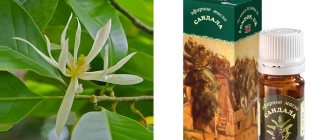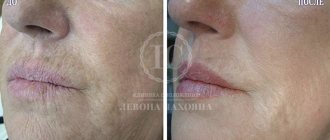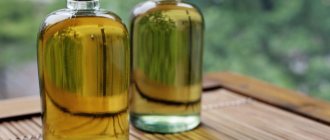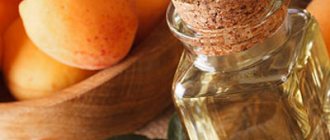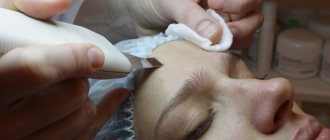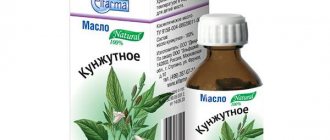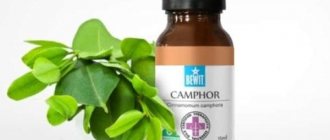Whitening, soothing, rejuvenating, anti-inflammatory - all these properties are possessed by such a common and familiar plant as chamomile. Due to its unique healing power, the flower has long been successfully used in cosmetology as part of numerous masks, creams and gels.
Chamomile decoction for the face has also found wide application, which, despite its ease of preparation, is very popular and demonstrates high effectiveness.
What are the benefits of chamomile for the face?
It is known that back in the 15th century, people were already extracting medicinal oil from chamomile and using it to rejuvenate their faces. Court ladies and simple peasant women used chamomile infusions to preserve youth and beauty.
- Vitamin A helps increase skin elasticity and makes it silkier.
- Sesquiterpene carbohydrates protect the skin from external factors.
- Flavonoids successfully resist ultraviolet radiation.
- Organic acids penetrate deeply into the epidermis and cleanse, moisturize, and whiten the skin.
- Caprylic acid, having antiseptic properties, relaxes the facial muscles and promotes the rapid penetration of valuable substances into the deep layers of the skin.
- Azulene resists inflammation and at the same time protects the skin from acne and pimples.
- Chamazulene, which is present in large quantities in chamomile oil, protects the skin from allergenic manifestations.
- Coumarin helps cells recover.
- Polysaccharides retain moisture and serve as a protective shield.
- Sitosterol delivers oxygen to cells and is a stimulating force for active oxygen microcirculation.
A little history
Medicinal chamomile is a plant often used in home medicine and cosmetology. There are many types of flowers that differ in their healing properties. The most valuable are German or blue and Roman daisies.
In Russia, the flower is found everywhere and has been actively used for medicinal purposes since ancient times. In its natural environment, the plant is also found in European countries. The grass is cultivated in Hungary, Yugoslavia, Czechoslovakia, Belgium, and Spain.
The ancient Sumerians, Egyptians and Greeks prepared various potions from chamomile. Hippocrates began to use the plant to treat skin ailments.
Tibetan monks took beneficial flowers to prepare rejuvenating mixtures. Nowadays, chamomile is often used in cocktails for medical and cosmetic purposes.
How to use
Chamomile can be used in several ways:
- as a face wash;
- skin rub;
- in the form of a facial spray;
- in the form of ice cubes for cold massage;
- as compresses;
- in the form of additives in various compositions of cosmetic masks.
Washing with chamomile
To wash your face, you need to prepare a chamomile infusion from a spoon of dried chamomile flowers and a glass of boiling water. After the tea has steeped, dilute it with a liter of warm water and wash your face.
After the procedure, it is advisable not to use a towel, but only lightly blot your face with a paper napkin. You can wash your face with chamomile twice a day; in the morning, chamomile will serve as an excellent tonic, and in the evening it will soothe and disinfect the skin.
Steaming your face with chamomile steam baths
Steam is an excellent helper for deep cleansing the skin. After this procedure, the pores will open, peeling will be eliminated, and the skin will be prepared for peeling.
A bath for oily skin is done as follows: pour boiling water over chamomile and after a few minutes, so as not to burn your face, keep it over the steam for 15 minutes. The head is covered with a towel. In addition to chamomile, you can add string, burdock, and calendula to the water. If there are acne or pimples on the face, add essential oils of pine, eucalyptus, and cedar to the water, 6 drops per 1 liter.
It is better to make a chamomile bath for oily skin with mint or add rose petals to the water. The number of minutes is limited to ten.
The temperature of the solution should not be higher than 70 degrees, otherwise the steam will burn your face. You cannot bend too low; you must maintain a distance of at least 30 cm above the water level. Before the procedure, you should wash off makeup from your face and apply moisturizer.
general description
Essential oil of chamomile, Roman or blue chamomile is produced by steam distillation from the dried inflorescences of the plant. The resulting substance has a dark blue color. During storage, the color risks gradually changing to green, and later to brown.
The smell of the product is deep herbal. The aroma has bright balsamic, sweet-spicy, fruity notes. The smell is persistent, but not intrusive. Many people compare the aroma to rotten hay, dried berries or plucked tobacco leaves.
The consistency of the product depends on the type of flower and the quality of the raw materials used.
Chamomile oil is often found in finished cosmetics. The substance has strong anti-inflammatory and wound-healing effects.
Note! In home care, they use macerate (an infusion of flowers on a vegetable fatty base), which you can prepare yourself or ether, but it is better to buy it ready-made.
In what cases is chamomile ineffective?
The main effect of chamomile on facial skin is associated with its healing properties. There is no scientific evidence for other properties attributed to the plant. One can only guess about the beneficial qualities of the plant in folk medicine.
There is scientific research evidence that chamomile reduces oily skin, but only in the form of an alcohol tincture. However, after suspending the procedures, the problem returns again.
The sebaceous glands work at an increased rate due to internal disorders, which may be associated with hormonal changes, gastrointestinal diseases and other hidden ailments.
If redness on the skin is caused by dilation of the subcutaneous vessels, chamomile will be powerless. Cuperosis is not a disease that can be solved with the help of a plant.
Chamomile will also not be able to completely remove freckles or age spots; it will only slightly retouch the problems. Chamomile has a whitening effect and will partially correct the complexion.
If you are concerned about constantly appearing dark circles and puffiness under the eyes, you should look for a solution to the problem not with cosmetic techniques, but with the removal of disturbances in the functioning of the internal organs.
Indications for use and contraindications
Not sure if you should use chamomile for cosmetic purposes? I suggest you familiarize yourself with the impressive list of indications for use and, if you find yourself with similar symptoms, feel free to take a natural component with a lot of healing properties into your arsenal.
In what cases is chamomile therapy recommended:
- skin irritation;
- itching and rashes;
- overactive production of sebaceous glands;
- enlarged pores;
- swelling;
- dark circles under the eyes;
- skin laxity;
- flabby appearance;
- dryness and flaking;
- dark spots;
- gray and lifeless complexion.
Chamomile has no contraindications, it is hypoallergenic and suitable for any skin type, of course, if you do not suffer from individual intolerance to the components included in its composition. In this case, using the ingredient is strictly prohibited; instead of the desired positive effect, there is a risk of getting an extremely negative result.
Before using masks, lotions and chamomile decoctions, do a test first. Place 2-3 drops of the solution on the bend of your elbow or the inside of your hand. Spread a small amount of the mask on the back of your hand and leave for 5-7 minutes. In the absence of negative reactions, such as redness, rash, itching and other symptoms, you can safely use natural restorative cosmetics.
Chamomile secrets for daily care
For daily care of the skin around the eyes, you will need two sachets of chamomile. Pour boiling water over the packaged chamomile and wait until the water cools. Using cotton pads soaked in the infusion, make compresses on your eyelids. Keep them on your eyelids for 15 minutes, then wash your face and apply cream to your eyelids.
Daily lotion for combination skin should be prepared as follows: Mix equal (50 g) parts of chamomile, plantain, calendula, pine needles. Pour 0.5 liters of alcohol and leave in the refrigerator for a week. Strain the tincture and wipe your face with it.
Tonic with chamomile and mint for three times a day is prepared as follows: add dry herbs in equal quantities with water and boil for 10 minutes. After the broth has cooled, strain and wipe your face.
Chamomile cream
In order to prepare a homemade chamomile-based nourishing cream, you will need the following ingredients:
- beeswax – 30 g;
- cypress oil -5 drops;
- bergamot oil – 5 drops;
- borax – 2g;
- purified water – 50 ml;
- chamomile oil – 25 g.
Mix the ingredients and simmer in a water bath until thickened. Then put it in the refrigerator, where the mass should become even thicker. Store the product only in the cold.
Acne treatment: the effectiveness of chamomile
Chamomile is an effective remedy against inflammation, microbes, viruses; it contains vitamins, acids and microelements that have a positive effect on the skin. This inexpensive, accessible and natural medicine helps many people overcome such negative phenomena as acne and blackheads, redness and rashes on the skin of the face.
Chamomile oil
The oil is suitable for both dry and combination skin. It helps smooth out wrinkles and restores skin elasticity. This cosmetic product is sold in pharmacies and used without dilution. It combines well with esters of many plants and is suitable for both internal and external use.
Chamomile oil can be added 5 drops to ready-made cosmetics: cream, tonic, lotion. You need to lubricate problem areas with oil daily.
User reviews
Chamomile ether and other plant-based products are in demand. Consumers like the effect of substances on the skin. This option replaces expensive cosmetics, giving a bright effect.
The work of the product is invariably given a positive assessment and its use is recommended.
I liked the effect of the substance in different mixtures.
The consumer equates the effect of oil and expensive creams.
I like the effect on the skin in masks.
Homemade facial recipes with chamomile
At home, the medicinal plant is used in different ways, but in order for the healing substances not to lose their relevance, the rules for preparing potions must be followed.
Decoction
A real healing decoction is prepared from dried flowers of the plant and boiling water in a water bath for at least half an hour. After which the broth is infused for another 20 minutes. The proportions may vary depending on the purpose of treatment. A weaker consistency is suitable for washing, and a strong concentration infusion is used to combat acne.
Ice cubes
If the broth is frozen in special ice cells, you will get an excellent tonic for the face. Ice cubes made from chamomile decoction rejuvenate, moisturize and tone. You can wipe your face with them two or three times a day.
The results from daily procedures will not take long to appear; you will feel positive changes within a few days.
Infusion
Proportions for preparing the infusion: two small spoons of dry chamomile herb per 100 ml of water. It is better to prepare the infusion in a thermos.
Cream
The cream for acne and acne is prepared as follows: boil 3 tablespoons of chamomile for 10 minutes, then leave for an hour. Melt the amount of butter (200 g) and pour it into the broth. Boil the mixture for 15 minutes, excess moisture should evaporate. Squeeze the juice from the lemon and add to the oil mixture. Store the cream in the refrigerator.
Chamomile face mask
A universal mask is suitable for any skin; it is used up to twice a week and is prepared as follows:
- chamomile – 2 spoons;
- milk – 4 spoons;
- cucumber, chopped avocado, half each.
Mix the ingredients and let it brew. Use on the face and décolleté area.
Homemade mint tonic. Making tonic at home
To prepare a cleansing homemade tonic, you need to prepare dishes and a spoon, which should be ceramic, glass or porcelain. This choice of materials is due to the fact that the metal will definitely react with the herbal infusion and deprive it of its beneficial properties.
If you use fresh mint leaves, you need to take a handful of the raw material. If, instead of fresh leaves, dry and crushed mint leaves are used, then you should make do with a volume of raw materials equal to one teaspoon. Mint leaves along with dried sage, filling half a teaspoon, must be placed at the bottom of a bowl and filled with one glass of hot distilled water. The water temperature should be approximately 50-60 degrees Celsius. If it is less than the specified value, then the biologically active substances will not transfer from the herbal raw material into the water; if it is greater than the specified value, then the beneficial components of the herbal infusion will be destroyed.
After these manipulations, cover the dish with a lid and place it in a dark place. While the container with herbal infusion is cooling, do not move it or lift the lid. After four hours, the product is filtered through thin cotton cloth or thick gauze, poured into a dark glass bottle and placed in the refrigerator.
The mint and sage tonic can be used the same day it is made. Unfortunately, this cosmetic product does not last long, because within seven days after preparation the composition will lose its beneficial properties for the skin. In a week, you will have to get rid of the old infusion and prepare a new portion of mint and sage tonic.
